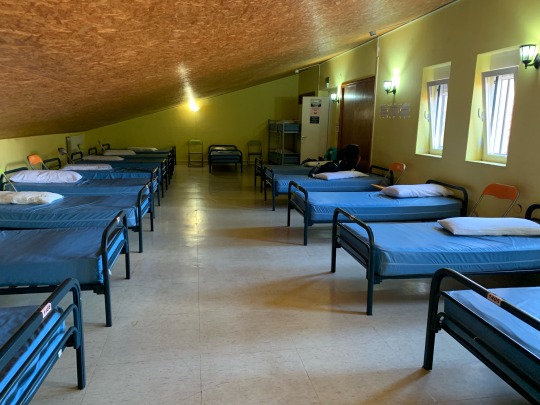#golf irrigation
Text
Discover the Power of Golf: Unleashing Your Potential
Golf is a club-and-ball sport played on a course where players use various clubs to hit a ball into a series of holes in as few strokes as possible. It is a challenging sport that combines physical skills, mental focus, and strategic thinking. Golf has gained popularity worldwide and is enjoyed by both amateurs and professionals.
Why Golf is So Hard
Most professional athletes agree that golf is one of the hardest sports to play. While football, soccer, basketball, and chess have their own unique challenges, golf combines physical, mental, and strategic elements into one demanding sport. The precision needed to hit the ball accurately, the mental focus required to make strategic decisions, and the physical endurance to complete a round make golf a truly challenging activity.
Is Golf Expensive?
Golf is often considered a luxury activity and can be relatively expensive to pursue. Engaging in the sport usually requires joining a golf club or course, which can have high membership fees. Additionally, golf equipment, such as clubs, balls, shoes, and attire, can be costly. However, there are more affordable options available, such as public golf courses and second-hand equipment, making the sport accessible to a wider range of enthusiasts.
Stay Updated with Golf News
Keeping up with the latest golf news, gear, instruction, and style is essential for any golf enthusiast. There are various sources that provide comprehensive coverage of golf tournaments, players, and courses. Some popular websites and channels include Golf Digest, ESPN Golf, NBC Sports Golf, and CBS Sports Golf. These platforms offer live coverage, interviews, highlights, statistics, predictions, and results.
Golf Courses in Austin, Texas
Austin, Texas, is home to several excellent golf courses where enthusiasts can hone their skills and enjoy the game. One notable course is the Butler Pitch & Putt, known for its laid-back atmosphere and beautiful surroundings. It offers a great place for golf practice and even features a beer garden for players to relax after their rounds. Other golf courses in Austin provide diverse challenges and stunning scenery, making the city a great destination for golf lovers.
PGA Tour and Golf Rankings
The PGA Tour is one of the most prestigious golf tours globally, featuring top professional golfers competing in various tournaments. The tour provides real-time live scoring, player stats, standings, and fantasy games. Official World Golf Rankings determine the rankings of professional golfers based on their performances in these tournaments. CBS Sports, ESPN, and Golf.com are popular platforms that provide the latest news, scores, and projections for golf enthusiasts.
In Conclusion
Golf is an exciting and challenging sport that combines physical skill, mental focus, and strategic thinking. Despite its reputation for being an expensive activity, there are affordable options available for enthusiasts to enjoy the game. Staying updated with the latest golf news, gear, and instruction is important for any golf lover. Whether you are a beginner or an experienced golfer, the sport offers a unique experience and can be enjoyed in various locations, including the beautiful golf courses in Austin, Texas.
Frequently Asked Questions On Discover The Power Of Golf: Unleashing Your Potential
Best Golf Item
1 note
·
View note
Text
Ful-Flo specializes in fountain services
#Ful-Flo specializes in fountain services#spray parks#agricultural & golf irrigation. We cover residential & commercial areas in Winnipeg & Manitoba.#Fountains services winnipeg#Fountains repairs manitoba#Agricultural irrigation manitoba#water treatment plants winnipeg#Ful-Flo Industries Ltd. was first incorporated in 1976. Providing irrigation and concrete splash or spray pads in Winnipeg#Manitoba and NW Ontario#Ful-Flo Industries is located on the outskirts of Winnipeg on the north Perimeter Highway just a ½ mile west of Highway#7#keywords:#Golf irrigation winnipeg#Spray pads winnipeg#Article:#Ful-Flo Industries Ltd. offers a warehouse of possibilities regarding the residential/do-it-yourself markets for irrigation in Manitoba. If#Read more#GOLF IRRIGATION#Ful-Flo Industries Ltd. is proud to support the golf course industry with the best product#people and equipment available. From our parts and service counter that will support#Agricultural irrigation winnipeg#AGRICULTURAL IRRIGATION#From its earliest days#Ful-Flo Industries Ltd. has left its mark in the agriculture industry. One of Ful-Flo Industries Ltd.'s major markets is the Manitoba Potat#fountains services manitoba#FOUNTAINS#A fountain conveys elegance and relaxation#while drawing attention to your area of interest It is human nature to be drawn to the beautiful fountain on your area#Spray pads manitoba#SPRAY PARKS
1 note
·
View note
Text
Fountain & Irrigation Services Experts in Winnipeg
#Ful-Flo specializes in fountain services#spray parks#agricultural & golf irrigation. We cover residential & commercial areas in Winnipeg & Manitoba.#Fountains services winnipeg#Fountains repairs manitoba#Agricultural irrigation manitoba#water treatment plants winnipeg#Ful-Flo Industries Ltd. was first incorporated in 1976. Providing irrigation and concrete splash or spray pads in Winnipeg#Manitoba and NW Ontario#Ful-Flo Industries is located on the outskirts of Winnipeg on the north Perimeter Highway just a ½ mile west of Highway#7#keywords:#Golf irrigation winnipeg#Spray pads winnipeg#Article:#Ful-Flo Industries Ltd. offers a warehouse of possibilities regarding the residential/do-it-yourself markets for irrigation in Manitoba. If#Read more#GOLF IRRIGATION#Ful-Flo Industries Ltd. is proud to support the golf course industry with the best product#people and equipment available. From our parts and service counter that will support#Agricultural irrigation winnipeg#AGRICULTURAL IRRIGATION#From its earliest days#Ful-Flo Industries Ltd. has left its mark in the agriculture industry. One of Ful-Flo Industries Ltd.'s major markets is the Manitoba Potat#fountains services manitoba#FOUNTAINS#A fountain conveys elegance and relaxation#while drawing attention to your area of interest It is human nature to be drawn to the beautiful fountain on your area#Spray pads manitoba#SPRAY PARKS
0 notes
Text

Golf rights for Coober Pedy and Coober Pedy only.
#magnetar rambles#Amazing! local golf course doesn't try to IRRIGATE THE SAHARA to bring stupid game to life!
11 notes
·
View notes
Text
Fountain & Irrigation Services Experts in Winnipeg & Manitoba | Ful-Flo Industries Ltd

0 notes
Text
Drip Irrigation for Agriculture
Drip irrigation systems are quickly becoming the top choice for thousands of farmers in Ontario due to their precision, resource efficiency, and ease of system adaptability. These systems work by delivering water and nutrients directly to the root zone of the plants, ensuring that every drop counts. In a world where water scarcity is a growing concern, drip irrigation provides a sustainable solution that can boost crop health and yield.
Netafim DripNet PC – Pressure Compensating Drip Irrigation
Netafim, a company renowned for its commitment to sustainable agriculture, is at the forefront of the drip irrigation industry. Netafim offers a wide range of different drip lines, all offering reliable, robust benefits related to your application. Likely the most popular choice tends to be DripNet PC, one that offers a wide array of benefits for modern agriculture. Its primary strength lies in being a dependable irrigation solution for challenging terrains.
Netafim DripNet PC - Thinwall Dripperline (LWD)
Netafim DripNet PC Thinwall Dripline showcases remarkable innovation in agricultural irrigation. Its lightweight and flexible design makes this dripper line an excellent choice for irrigating seasonal fields and other applications that demand flexibility. Let's explore the standout features of DripNet PC
#irrigation equipment#irrigation products#drip irrigation system#golf course irrigation system#lawn irrigation system#golf course maintenance#golf course irrigation system repairs#delhi irrigation supply#farm irrigation equipment supply#irrigation system
0 notes
Photo

Brick Pavers Landscape in Phoenix
Inspiration for a sizable tropical backyard brick landscaping that can withstand drought and full sun.
#putting green#tumbled paver installation#tropical landscaping#arizona golf#water features#irrigation#chipping and putting green
0 notes
Photo

Phoenix Landscape
Inspiration for a large tropical drought-tolerant and full sun backyard brick landscaping.
#water features#golf feature#arizona golf#tumbled paver installation#irrigation#chipping and putting green#landscape
0 notes
Text
In the late 18th century, [...] Lahaina carried such an abundance of water that early explorers reportedly anointed it “Venice of the Pacific”. A glut of natural wetlands nourished breadfruit trees, extensive taro terraces and fishponds that sustained wildlife and generations of Native Hawaiian families.
But more than a century and a half of plantation agriculture, driven by American and European colonists, have depleted Lahaina’s streams and turned biodiverse food forests into tinderboxes. Today, Hawaii spends $3bn a year importing up to 90% of its food. This altered ecology, experts say, gave rise to the 8 August blaze that decimated the historic west Maui town and killed more than 111 people.
“The rise of plantation capital spawned the drying of the west side of Maui,” said Kamana Beamer, a historian and a former member of the Hawaii commission on water resource management [...].
---
[S]ugar and pineapple white magnates began arriving on the islands in the early 1800s. For much of the next two centuries, Maui-based plantation owners like Alexander & Baldwin and Maui Land & Pineapple Company reaped enormous fortunes, uprooting native trees and extracting billions of gallons of water from streams to grow their thirsty crops. (Annual sugar cane production averaged 1m tons until the mid-1980s; a pound of sugar requires 2,000lb of freshwater to produce.)
Invasive plants that were introduced as livestock forage, like guinea grass, now cover a quarter of Hawaii’s surface area. The extensive use of pesticides on Maui’s pineapple fields poisoned nearby water wells. The dawn of large-scale agriculture dramatically changed land practices in Maui, where natural resources no longer served as a mode of food production or a habitat for birds but a means of generating fast cash, said Lucienne de Naie, an east Maui historian [...].
“The land was turned from this fertile plain – with these big healthy trees, wetland taros and dryland crops like banana and breadfruit – to a mass of monoculture: to rows and rows of sugar cane, and rows and rows of pineapple,” she said.
---
The Great Māhele of 1848, a ground-breaking law that legitimized private land ownership, laid the ground for big developers to hoard water for profit, said Jonathan Likeke Scheuer, a water policy consultant and co-author of the book Water and Power in West Maui. [...] [T]he creation of private property allowed agricultural corporations to wield “political and ultimately oligarchic power” over elected officials. In 1893, a group of sugar magnates and capitalists overthrew the Hawaiian Kingdom’s Queen Liliuokalani, paving the way for the US to annex Hawaii five years later. Sanford Ballard Dole, a cousin of Dole Plantation’s founder, served as the first governor of Hawaii.
When the last of the sugar companies closed in 2016 [...], Scheuer said, the farms were purchased by large investors for real estate speculation and left fallow, overrun with invasive grasses that became fuel for brush fires. Developers [...] took control of the plantations’ century-old irrigation ditches and diverted water to service its luxury subdivisions. In doing so, it left scraps for Indigenous families who lived downstream. [...] [O]n Maui, 16 of the top 20 water users are resorts, time-shares and short-term condominium rentals equipped with emerald golf courses and glittering pools [...].
---
Text by: Claire Wang. "How 19th-century pineapple plantations turned Maui into a tinderbox". The Guardian. 27 August 2023. [Bold emphasis and some paragraph breaks/contractions added by me.]
270 notes
·
View notes
Note
Asking pretty please for info on your courier if you don't mind!!! Did you go with a specific build or play her a certain way?
Also any backstory you wish to share I will eat that right up, I just love the courier x coop fic you wrote!
YES OH GOSH YES SO
She goes by Lizzie Holliday or Doc Holliday and her tag skills are medicine, science, and speech. I generally play her as a well-meaning but chaotic field doctor who ends up wandering into Plot Situations.
Here's some [chef kiss] art of her by @jara257/@jaradraws for reference:

Some backstory is that her actual name is Adelita Espinosa and she was born in New Mexico. Her father was a traveling doctor and her mother was a scientist studying radiation mitigation in crops and irrigation. Her mother died of radiation poisoning when Lizzie was very young, so she doesn't remember her well. After that, she traveled with her father and learned all of her medical know-how from him.
After Dr. Espinosa died of natural causes, Lizzie moved on to find her place in the Wasteland. Kind of like a gap year. Maaaaybe she wanted to be a doctor? Or a scientist like her mom? But just like a gap year student, she needed an interim job to make ends meet and took the courier job. Cue FNV plot.
So Lizzie doesn't really think she has a head for politickin', but she ends up making decent choices in like a crapshoot way. Or like someone rolling a D20 and rolling very high every time, even when she doesn't want to. New Vegas ends up in her lap, and her whole decision to rule it is just because she thinks everyone else vying for it sucks. In her mind, she's just a placeholder for someone better at bureaucracy who doesn't suck. The only problem is that's, like, everybody. So she's still there.
And fun facts!
She's incredibly pansexual, and after her head wound, she's really leaned into a whole 'life is short, people are hot' lifestyle, except 'people' sometimes includes robots. And light switches.
She collects pencils because she runs out of them all the time.
Her favorite foods are snack cakes, cazador honey, and roasted pinyon nuts.
When she doesn't live in Vegas (which she tries not to), she's either in Goodsprings or wandering around with Raul.
After the events of FNV, she gets two pet nightstalkers named Gertie and Jose.
Her hobbies including playing guitar, sketching, embroidery (to practice her stitching work!), swimming, and practicing her golf swing. She doesn't understand how golf works and she doesn't want to, but there's something very fun about launching golf balls at unsuspecting fiends and Legion boys.
Her favorite weapon is Paciencia.
In her canon route, she's the one who botches Caesar's brain surgery. Whoops. :)
That said, she also canonically talks Lanius out of attacking and does the same to get Vulpes to leave (or does he?).
(She and Vulpes have a Thing. I never said she had a good sense of self-preservation.)
She takes her role as one of The Kings very seriously and has perfected her hip sway and 'uh-huuuuh's.
The most in love she's ever been is with Dr. 8 from Big MT.
Her dream fate is to get ghoulified so she and Raul can hang out forever and maybe she can go visit the REPCONN ghouls in space.
Realistically, she'd also like to live at Nellis with the Boomers until the end of her days. It sounds much more fun to her than ruling New Vegas.
She'd be so into Cooper Howard that it'd make her bonkers. She'd draw little hearts around his name in notebooks.
12 notes
·
View notes
Text
A series of government reports have documented how much of the trillions of dollars purportedly spent on “Covid relief” went to waste — ranging from the hundreds of billions in fraud (i.e., the “Great Grift”) to extravagant local government expenditures (e.g., renovating a minor league baseball stadium and replacing irrigation systems at golf courses).
But out of all that waste, most Americans would consider money spent on countering pandemic learning loss a legitimate use of government resources. (Mind you, many Americans, including this one, would question why public school unions insisted on keeping schools closed for endless periods of time, but that’s a separate story.)
Now several new data points suggest that much of this money has likewise been frittered away, leaving a generation of American students far worse off.
Wasteful School Spending
An in-depth investigation by the education organization The 74 demonstrated that much of the $190 billion in federal funds has gone to projects that often will not directly help students learn. A series of public records requests discovered just some of the ways districts spent their federal relief dollars.
To begin, in Colorado, a charter school network “spent about $70,000 for an exterior fence at its Aurora campus so students and staff could eat outside despite concerns about proximity to the community’s rising homeless population.” While this expenditure says much about social policy in Colorado, it has practically nothing to do with reversing learning losses.
In California, Oakland’s school district used $1.6 million for a payment on a $100 million loan the district took out from the state of California in 2003 — well before the coronavirus hit. What’s more, the district in Stockton, California, “spent over $2 million on high-level central office positions, like a facilities director.”
Youngstown, Ohio, frittered away $5 million on equipment and supplies to provide free WiFi from utility poles — a project the district could never implement because the city didn’t own all of the utility poles in question.
And in Utah, the Granite Public Schools spent $86,000 on “accommodations” for a conference held at — wait for it — Caesars Palace in Las Vegas.
Call me crazy, but when the federal government gave out money to help public schools, I don’t think that sending a bunch of administrators to meet Donny Osmond was at the front of most taxpayers’ minds. What’s more, the school district publicly advertised and bragged about this extravagant expenditure of government funds, which demonstrates that public school employees need some lessons in political science — either that or they just don’t care.

In some respects, it’s a miracle that The 74 could even compile these examples of wasteful public school spending. In many states and districts, citizens can’t even track where districts’ share of the $190 billion in federal funding went — let alone how (if at all) it is countering the effects of pandemic learning loss.
As one Fairfax County, Virginia, parent noted, districts’ reports on their spending are often “full of jargon and gobbledygook.”
Poor Quality Teaching
An even more troubling sign came in the form of another recent report, this one by the Center for Reinventing Public Education. Its study focused on in-depth interviews with leaders at five public school districts and found that even in districts that have dedicated resources toward stemming Covid-related learning loss, teachers and administrators faced an uphill battle to regain lost ground.
Broadly speaking, the report indicated that districts cannot keep up with the current curriculum, let alone try to undo the effects of Covid closures. Many teachers have left, substitutes and replacements remain scarce, skills have atrophied, and administrators lacked the time or ability to supervise teachers’ instructional methods until very recently.
Consider the following quotes from the report:
“$500,000 for tutoring, basically. Are you kidding me? That’s a lot of money. And nothing to show for it [in terms of impact on student learning].”
“We spent a lot of money on retention bonuses and ‘please stay’ payments. … You might as well burn that money because it didn’t bear out. People left anyway.”
“All these [tutoring] companies … accelerated their hiring and probably didn’t have time to appropriately train people up or go in and coach people on the job. They’re just placing people. And so we’re probably getting some B Team members.”
“I do think the first and foremost issue is ‘Do we have enough high quality teachers in our schools to do this work?’ And the answer is no right now for us.”
“There’s been a lot of protectivist [attitudes among district staff], like we can’t ask teachers to do anything else.”
“[We have teachers who lack] expectations for kids; that kids can be excellent.”
A demoralized workforce that cannot keep pace, and in many cases lacks the initiative to demand high standards of either its students or itself — that’s what $190 billion in federal funds has bought the American people.
Of course, teachers unions have no one but themselves to blame for the problems in public education post-Covid, having lobbied extensively to keep schools closed for most (if not all) of the pandemic. But the next generation of Americans deserves far better from their educational system.
Some are getting it, even if they have to go outside the traditional public school system to do so. Here’s hoping that states will continue to expand school choice — a far better investment of taxpayer resources — to give people more options other than a sclerotic, wasteful, and ineffective public school bureaucracy.
#article#covid19#coronavirus#education#government spending#money laundering#public schools#public education
11 notes
·
View notes
Text

The Milagro Beanfield War (1988). The accidental breakdown of an irrigation valve launches a hot confrontation between the mainly Latino farmers in a tiny New Mexico town and the real estate developers and politicians determined to acquire their land for a golf resort.
This is a weird little one. A David vs Goliath story with the residents of a small town in New Mexico left fighting off developers who'd turn the land into a golf resort. It's part Western, part class drama, part borderline-slapstick comedy, which makes it feel a little all over the place. It has its moments though, and there's some nice cinematography at points. 5/10.
#the milagro beanfield war#1988#Oscars 61#nom: score#won: score#robert redford#david s ward#john nichols#ruben blades#richard bradford#sonia braga#christopher walken#melanie griffith#julie carmen#drama#politics#farming#race#5/10#america#american
2 notes
·
View notes
Text

#Fountain & Irrigation Services Experts in Winnipeg & Manitoba | Ful-Flo Industries Ltd#Ful-Flo specializes in fountain services#spray parks#agricultural & golf irrigation. We cover residential & commercial areas in Winnipeg & Manitoba.#Fountains services winnipeg#Fountains repairs manitoba#Agricultural irrigation manitoba#water treatment plants winnipeg#Ful-Flo Industries Ltd. was first incorporated in 1976. Providing irrigation and concrete splash or spray pads in Winnipeg#Manitoba and NW Ontario#Ful-Flo Industries is located on the outskirts of Winnipeg on the north Perimeter Highway just a ½ mile west of Highway#7#keywords:#Golf irrigation winnipeg#Spray pads winnipeg#Article:#Ful-Flo Industries Ltd. offers a warehouse of possibilities regarding the residential/do-it-yourself markets for irrigation in Manitoba. If#Read more#GOLF IRRIGATION#Ful-Flo Industries Ltd. is proud to support the golf course industry with the best product#people and equipment available. From our parts and service counter that will support#Agricultural irrigation winnipeg#AGRICULTURAL IRRIGATION#From its earliest days#Ful-Flo Industries Ltd. has left its mark in the agriculture industry. One of Ful-Flo Industries Ltd.'s major markets is the Manitoba Potat#fountains services manitoba#FOUNTAINS#A fountain conveys elegance and relaxation#while drawing attention to your area of interest It is human nature to be drawn to the beautiful fountain on your area#Spray pads manitoba
0 notes
Text
Day 12 - Najera to Santo Domingo de la Calzada
The Guide Book says today was 13.2 miles, but we made a small diversion for lunch and my phone says 14.5 miles.
We had our bags transferred today so travelled light. As we walk more days the pads of our feet are getting a bit sore and the rucksack feels heavier and heavier! It’s really easy to have it transferred, most albergue’s have envelopes belonging to the carriers which you attach to your rucksack. You need to have somewhere reserved to send it to, and I have been doing all the booking online.
Anyway, back to today…We set off as usual at 7:30 in overcast weather with the odd spot of rain. Within half an hour we had our ponchos on but it never got more than a bit drizzly.
We climbed out of the town through some forestry passing an odd statue of Jesus up on the hill. The hillside, path, rocks and land in general is very red in this part.


There were plenty of vineyards to admire, some being very well kept with guys at the side of the path strimming the weeds away. The above ground irrigation system was interesting to see.


We were making for Azofra for breakfast, about 4 miles away. Breakfast was the usual coffee, orange juice and pain au chocolat. But to be honest the novelty is now wearing off and we’re thinking of other things that we could have instead.
The lunch stop was about another 6 miles away so we plodded on. Our lives are defined by how far away the villages are for breakfast, lunch and final destination!
The landscape initially wasn’t particularly pretty, the path passing by the side of a motorway, but it soon turned inland and we were once again rewarded by huge open fields, reverting back to the chalk path, deep green barley fields, yellow rape fields and poppies by the pathway. The weather cleared up, the sun came out, and we had some amazing views either side to the hills and mountains.

As we approached Ciruena, our lunch stop, we initially went through what looked like a golf resort, with modern seemingly empty houses, a golf course and swimming pool. It all looked a bit out of place and odd.

We diverted off the waymarked path into Ciruena village to the local bar for a welcome drink (Jane had freshly squeezed orange juice and I the local lemonade that I have become very attached to) and a warm tuna, cheese and egg roll.
After lunch we carried on through the open landscape finally reaching Santo Domingo shortly after 2.


We’re in an ancient very large albergue right in the middle of the old town. Our room is in the old part of the hostel up in the eaves. All bar one of the beds are single beds, it’s like an old school dorm!

I chilled until 5 while Jane went for a wander, then we both went to see the cathedral. It’s huge and they have done a good job inside of making sure everything is explained very well.

We had a Pilgrim’s menu in the square then went to find the supermarket for a few bits. On the way we passed groups of youngsters practicing for a dance competition and it was great to watch them.
Now we’re back and chilling, and hoping we’ll get some sleep. Tomorrow is a very short day so hopefully we can snooze in the afternoon.
10 notes
·
View notes
Text
Top 8 Tips for Winterizing Your Golf Course Irrigation System
Why Winterize?
Winterization is the process of eliminating all water from an irrigation system to prevent the potential damage of any of its components. In cold climates where freezing is inevitable, winterizing is critical. Water expands in volume approximately 9% as it transitions from liquid to solid, resulting in ruptured equipment within a closed system. However, with proper winterizing of your golf course irrigation system, you’ll be able to relax and keep warm over the cold months, knowing your equipment will be prepared to perform again in the spring. The time invested now in winterizing your system will pay off dividends when you next need it.
Preparing to winterize a golf course irrigation system can feel overwhelming; the system covers a broad area, and there are many components requiring attention. Furthermore, an average golf course network of pipes can hold 22,000 to 27,000 gallons of water - a significant volume to drain! Golf course operators and commercial landscape contractors are accustomed to irrigation maintenance, however, and winterization is one vital component of that routine. You can easily develop a winterization procedure by utilizing the 8 tips itemized below.
#irrigation equipment#golf course irrigation system#golf course maintenance#golf course irrigation system repairs
0 notes
Text

This reservoir (Lake Cle Elum), is a mountain lake which feeds the Cle Elum river. The Cle Elum river feeds the Yakima and is an important source of irrigation water. The lake is a just a few miles from our house and the river is less than 1/2 mile away.
In the late spring the lake is full from snow melt, but the level begins to fall in mid-summer as the snow melt ends and there’s no rain to replace the outflow to the river. We’ve never seen the lake in the fall/winter and I was shocked at how much the water level had fallen during the 7 weeks I was away on my bike trip. The lake level has easily fallen 30 feet. We’ve been told that this is completely normal, but it is jarring nonetheless. We took the opportunity to walk the new, temporary shoreline before seeing a matinee movie.

The nearest theater is in Ellensburg, a slightly larger town than ours. The theater is a bit quirky in that they don’t take credit cards; an ATM machine is by the ticket counter. We were joined by one other couple for the afternoon showing of the George Clooney/Julia Roberts romcom. It was formulaic but George and Julia are enjoyable to watch and we liked the movie.

Beth and I are working with the resort’s athletic club to get a run club started. When we moved to MN, the Lifetime run club is how we met most of our friends and we’d like to do the same here, even though most of our neighbors are likely to be the golfing type. Nothing against golfers, but they are usually a different breed from runners, especially country club/resort golfers.
30 notes
·
View notes